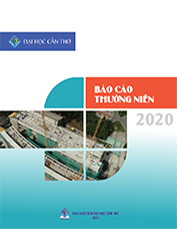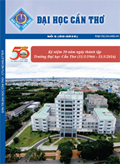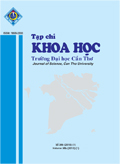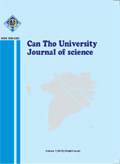ABSTRACT
Black tiger shrimp (Penaeus monodon) has been farmed in a wide range of salinity but the animal may grow differently in relation with salinity. The objective of the research was to find out the effects of salinity on feed utilization and basic oxygen consumption of black tiger shrimp. The experiments were conducted with shrimp juvenile (10±2 g) at four salinity levels including 3, 15, 25 and 35?. Feed consumption and gastric digestion periods were conducted in the plastic tanks of 1 m3 in volume. Ten stomaches of shrimp in each salinity level were collected after feeding 20 and 40 minutes and 1, 2, 3, 4 and 5 hrs. in order to identify feed amount in stomach and feed gastric digestion. The apparent digestibility coefficients of feed, protein and energy of shrimp were identified by Cr2O3 marked feed method and conducted randomly in composite tanks of 0.5 m3 each with three replicates for each the salinity. Basic oxygen consumption was determined by respirometer, ten shrimps were measured separately at each of different salinities for 24 hours. The results of research showed that the black tiger shrimp juvenile was able to adjust the physiological responses to limit the loss of energy to adapt to low salinity. The daily feeding frequency should be increased as shrimp culture in the lower salinities.
Keywords: salinity, digestibility, oxygen consumption, black tiger shrimp
Title: Effects of salinity on feed utilization and basic oxygen consumption of black tiger shrimp (Penaeus monodon)
TóM TắT
Tôm sú (Penaeus monodon) đang được nuôi ở nhiều vùng có độ mặn khác nhau và sinh trưởng của tôm có thể khác nhau theo từng độ mặn. Nghiên cứu nhằm tìm hiểu ảnh hưởng của độ mặn lên sử dụng thức ăn và tiêu hao oxy cơ sở của tôm sú (Penaeus monodon). Các thí nghiệm được thực hiện trên tôm sú giống (10±2 g) ở các độ mặn 3?, 15?, 25? và 35?. Thời gian sử dụng và tiêu hóa thức ăn của tôm sú được tiến hành trên bể nhựa 1 m3, dạ dày tôm được thu sau khi cho tôm ăn lúc 20 và 40 phút và 1, 2, 3, 4 và 5 giờ, mỗi nhịp thu 10 tôm ở mỗi độ mặn để xác định lượng thức ăn, thời gian tôm sử dụng và tiêu hóa hết thức ăn trong dạ dày. Độ tiêu hóa thức ăn, đạm và năng lượng của tôm được tiến hành trên bể composite 0,5m3 với phương pháp bố trí hoàn toàn ngẫu nhiên và lặp lại ba lần. Xác định độ tiêu hóa được thực hiện thông qua thức ăn có chất đánh dấu o-xit crom (Cr2O3). Tiêu hao oxy của tôm được xác định bằng hệ thống hô hấp kế với 10 cá thể tôm được đo riêng biệt ở mỗi độ mặn trong 24 giờ. Kết quả nghiên cứu cho thấy rằng tôm sú có khả năng điều chỉnh hoạt động sinh lý cơ thể nhằm hạn chế sự mất năng lượng để thích nghi với độ mặn thấp. Khi nuôi tôm ở độ mặn thấp thì cần tăng tần suất cho tôm ăn trong ngày nhiều hơn ở độ mặn cao.
Từ khóa: độ mặn, khả năng tiêu hóa, tiêu hao oxy, tôm sú






